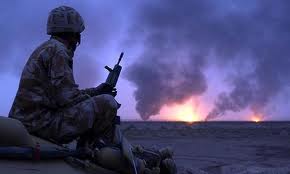 Since the 1973 Arab oil embargo, successive US administrations have equated national security with access to, and control of, oil – particularly in the Persian Gulf, which holds two-thirds of global oil reserves. In other words, as long as we need oil, we need the Persian Gulf.
Since the 1973 Arab oil embargo, successive US administrations have equated national security with access to, and control of, oil – particularly in the Persian Gulf, which holds two-thirds of global oil reserves. In other words, as long as we need oil, we need the Persian Gulf.
Faced with this unpleasant fact, every President since Carter has chosen to defend US “access” to the Persian Gulf.
Estimates of how much that particular decision has cost the US taxpayer have always been hard to come by. About a decade ago, Greenpeace and Doug Koplow (Earthtrack) published a study indicating that the cost of defending oil supplies were at least $10 billion annually.
Now a new peer reviewed study from Roger Stern, an economic geographer at Princeton, outlines an even greater cost of $7.3 trillion over 30 years.Stern looked at the cost of patrolling the Persian Gulf with aircraft carriers from 1976 to 2007. The carriers are only in the Gulf to secure oil supplies, so he views this as a great way to begin to measure military subsidies to oil. On the other hand, one could argue that the Soviet invasion of Afghanistan and the first Persian Gulf war were about more than just oil. Regardless, its a huge figure.
Read more here or see Oil Change’s 2006 report, A Climate of War.
